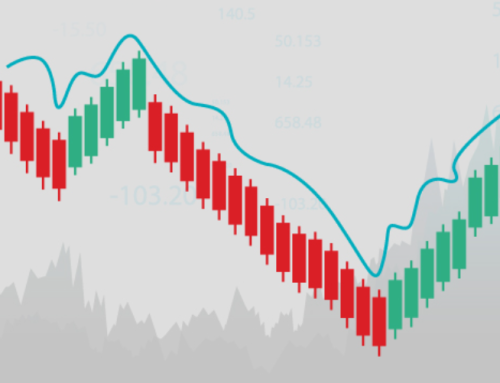Cryptocurrency trading has transformed the financial landscape, especially within binary options where traders speculate on short-term price movements. Bitcoin and Ethereum are dominant players, each offering unique trading opportunities. Comparing these two cryptocurrencies reveals insights into volatility, liquidity, and market behavior essential for decision-making.
Bitcoin, as the original decentralized digital currency, is viewed as a store of value, often dubbed digital gold. Ethereum introduced programmable smart contracts, expanding its use cases beyond currency. These differences affect how each asset responds to market stimuli, influencing trading strategies.
I’m Olivia Grant, a professional trader with over seven years of experience in derivatives and digital assets. My team at Horizon Capital has analyzed Bitcoin and Ethereum within binary options frameworks, and we aim to share our experiences to help you understand these cryptocurrencies, optimize strategies, and manage risk effectively.
By exploring the key differences, trading techniques, and risk management strategies, this guide will help you trade Bitcoin and Ethereum successfully in binary options. Whether you’re a novice or experienced trader, these insights will enhance your trading skills.
This guide also covers essential cryptocurrency trading strategies, how cryptocurrency trading works, and crypto trading signals. For Thai traders, understanding the cryptocurrency trading crackdown in Thailand is vital for compliance and informed decisions.
Key Differences Between Bitcoin and Ethereum
Bitcoin and another cryptocurrency differ in technology and market behavior. Bitcoin’s capped supply drives volatility, while the other cryptocurrency’s price is influenced by network upgrades and DeFi activity. The other cryptocurrency offers faster transactions but can have higher fees during congestion, affecting trader sentiment and liquidity.

Popular Binary Options Trading Strategies for Bitcoin
Cryptocurrency trading in binary options leverages volatility and trends. Trend following uses moving averages, while range trading capitalizes on consolidations. News-based trading reacts to macroeconomic events. Higher expiry timeframes balance volatility with predictability.
For automation, bot trade systems are gaining popularity, using algorithms for quick market responses. Crypto trading bots handle high-frequency trades, and crypto bot tools help manage risk and improve strategies efficiently.
Effective Trading Approaches for Ethereum in Binary Options
Ethereum’s strategies focus on shorter expiry times due to intraday movements tied to network updates or DeFi. Scalping works in high volatility, while breakout strategies capitalize on price surges after consolidations.
Traders track Ethereum Improvement Proposals (EIPs) and ecosystem developments for price shifts. For automated trading, bot trading systems use algorithms to execute trades based on pre-set criteria, offering an edge. Bot trade crypto systems manage multiple positions, while bot crypto enhances efficiency. A trade bot automates decisions, improving market responsiveness and reducing emotional bias.
Technical Analysis Tools for Bitcoin vs Ethereum
Technical indicators are vital in binary options trading for both cryptocurrencies. Candlestick patterns reveal sentiment and potential reversals, while trend lines help identify support and resistance zones. Moving averages smooth price fluctuations, providing clarity on trend direction.
Relative Strength Index (RSI) highlights overbought or oversold conditions, and Bollinger Bands indicate volatility expansions. While these tools apply to both assets, their parameters may be adjusted to accommodate Bitcoin’s longer-term trends versus Ethereum’s more frequent swings.
Fundamental Factors Affecting Bitcoin and Ethereum Prices
Bitcoin’s price is heavily influenced by factors such as institutional adoption, regulatory developments, and macroeconomic events impacting risk appetite. Its scarcity and perception as a hedge against inflation also shape market dynamics.
Ethereum’s value drivers include technological upgrades (e.g., Ethereum 2.0), network usage metrics, and developments in decentralized finance. Regulatory news affecting smart contracts and token standards also plays a role in price movements.
Risk Management Strategies for Trading Bitcoin and Ethereum
Effective risk management in binary options trading with these cryptocurrencies involves setting appropriate trade sizes, using stop-loss orders where applicable, and diversifying across expiry times and strategies. Due to high volatility, maintaining discipline and avoiding overexposure is critical.
Traders should also monitor market news actively to anticipate sudden price shocks and adjust positions accordingly. Employing a combination of technical and fundamental analysis enhances risk awareness and control, while binary options signals can provide real-time insights into potential trade opportunities, helping to make more informed decisions.
Binary option trading requires careful consideration of market conditions and discipline to ensure consistent success.

Choosing the Right Broker for Bitcoin and Ethereum
Selecting a reputable broker supporting both Bitcoin and Ethereum trading in binary options is essential. Key considerations include regulatory compliance, trading platform stability, fee transparency, and quality of customer support. Brokers offering robust charting tools and educational resources enable traders to execute informed decisions efficiently.
Verifying withdrawal policies and security measures protects funds, while access to demo accounts allows practice without financial risk. For those engaging in trading binary options, it’s crucial to choose a platform that provides a secure and user-friendly environment.
Trading Platforms Supporting Bitcoin and Ethereum
Leading binary options platforms now offer both cryptocurrencies due to their popularity. These platforms provide user-friendly interfaces, real-time price feeds, and customizable indicators. Mobile trading options enhance accessibility, allowing traders to respond swiftly to market changes.
Integration with secure payment gateways ensures seamless deposits and withdrawals, facilitating smooth trading experiences. To increase success, traders should focus on developing a solid binary options strategy and continuously refine their binary options trading strategy based on market conditions and individual preferences.
FAQ
Trading cryptocurrencies in binary options raises common questions regarding suitability, costs, and strategy execution. Understanding these aspects aids in navigating this evolving market confidently.
Which cryptocurrency is better for beginners in binary options?
Bitcoin is generally more suitable for beginners due to its relative stability, extensive market data, and widespread recognition, making analysis and prediction more approachable.
How do transaction fees affect Bitcoin vs Ethereum trading?
Ethereum’s transaction fees can be higher and more variable during network congestion, potentially impacting trade timing and costs, while Bitcoin’s fees are usually steadier but may be slower.
Can I trade both Bitcoin and Ethereum simultaneously in binary options?
Yes, most brokers allow simultaneous trading of multiple cryptocurrencies, enabling diversification and strategic positioning across assets.
Read also about:













Leave A Comment